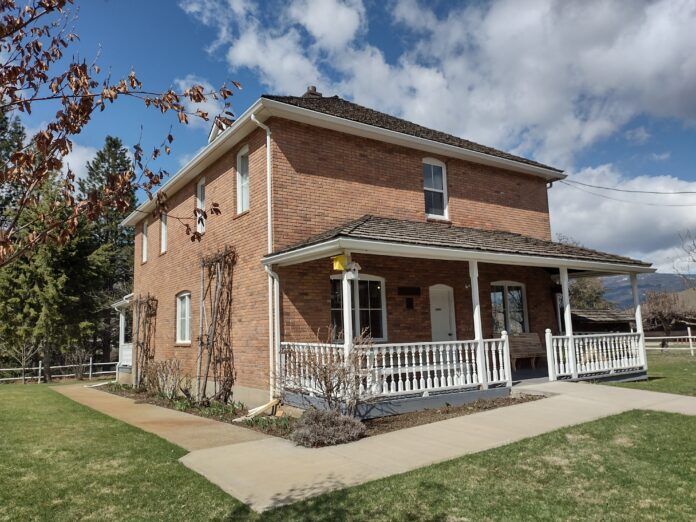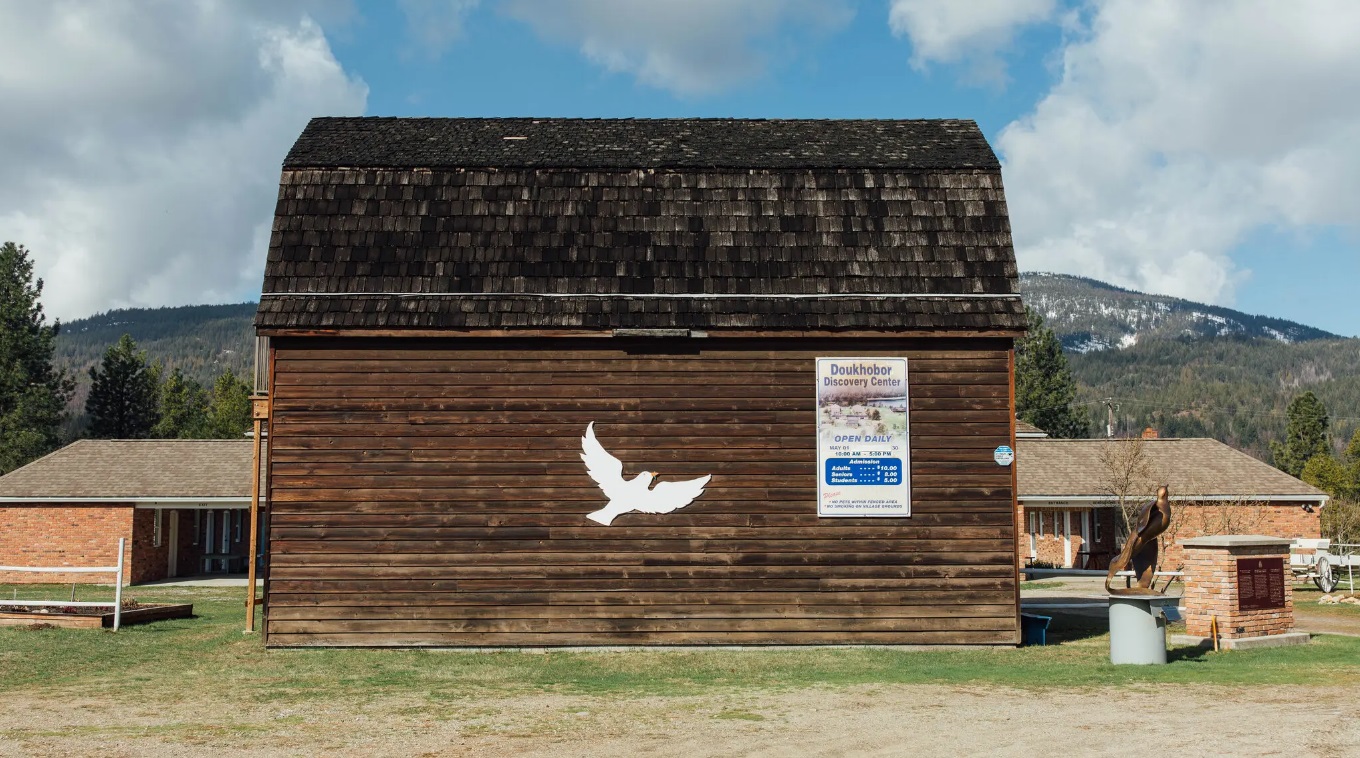

 |
 |
A different photo (right) was used in the New York Times article.
* A search of the New York Time archive "TimesMachine" finds 2 more recent articles:How did you become interested in this story?
- 2014 February 14 — 1939: ‘Pope’ of Nudist Sect Dies, page
SASKATOON, Canada— The ‘‘Pope’’ of the Russian Doukhobors sect, which clashed with the Canadian authorities two years ago by ordering its members to walk in the streets in the nude, has passed away, it was learned today. He was a Russian, named Verigin, and his disciples have telegraphed his son, who is in Europe, asking him to succeed his father as their spiritual head. The Doukhobors, who now number 15,000, are the remnants of descendants of a Russian colony which migrated to Canada and settled in Saskatchewan in 1892. They fell foul of the Canadian authorities by refusing to pay taxes and walking about naked by way of protest. Verigin and 725 of his followers were imprisoned, but Verigin later ordered the sect to respect Canadian laws. Since then the Doukhobors have become an orderly community.
- 2002 November 2 — 1902: Doukhobor Army's March : IN OUR PAGES:100, 75 AND 50 YEARS AGO, page
WINNIPEG The Doukhobor army, numbering 800 persons, is continuing its march towards Winnipeg. It has already marched 25 miles, and all superfluous clothing has been discarded by the fanatics in order that progress may be made. As the march progresses, the men become more infatuated and bent on carrying out their crazy purpose to Christianize the world. They do not commit any depredations, the only raid which they have made being on a turnip-patch. The Government is at a loss to know what steps to take.
- 1993 = 30 years ago —2023-30=1993
- 1992 October 19 — Sect That Fled Czarist Russia Looks Homeward, by Clyde H. Farnsworth, page 4 —
- 1977 June 5 — What's Doing In VANCOUVER, by Robert Trumbull, page 7, column 2, bottom — "Doukhobors." a Canadian play dramatizing the problems of assimilation faced by the immigrants from Russia renowned for taking off their clothes when upset, will be seen at the City Stage through July 1, 8:30 P.M., Monday-Friday $3.50, Saturday $5.
- 1975 March 9 — Learning To Love, Learning To Work, By Peter and Jane Davison, page 17 — Our New Harmonys, Shakers, Amanas, Amish and Doukhobors don't seem to be much more fertile than the mules they drive, and have a sad way of fading into extinction after a generation or two.
- 1974 May 5 — What's Doing In SPOKANE, page 9, last column — ... the Doukhobor Choir Festival and Bob Hope on May 26, ... the Doukhobor Choir Festival is $2 ... Expo '74 Entertainment ..
- 1971 September 26 — He believed in the qualities of the common man: A Traveler In Two Worlds, review of book by Maurice Hindus, page 55 — "Also memorable is his account of a sojourn among the Doukhobors, a colony of Russian vegetarians and pacifists in Western Canada who turned their backs on modern civilization." — Book page 291: ... formed a sect of their own, called Svobodniki — Freedomites. No Doukhobor would deign even to exchange greetings with any of them and no Freedomite ever had a kind word to say about the Doukhobors. They regarded Doukhbors as traitor to the faith of their fathers, ... Book page 293 : if you write about them, please do not fail to tell your reader that they are not Doukhobors, ....
* 100 years ago! Bilefsky and the New York Times apparently were most fascinated with Sons of Freedom, not Doukhobors, war or assimilation.Did the war in Ukraine bring it back to the fore, or why now?
... several Doukhobors in recent months had been denied service in local shops in CastlegarI think you are the first person to report on the 2021 census figures that showed the number of people identifying as Doukhobors continues to decline.
Bilefsky is probably referring to census data listed in a table on the web page Doukhobors, Wikipedia. The table is copied below adding a graph to show the "peak" mentioned in 1941, and the steep linear decline of about 80% in the next 50 years.Once you collected your interviews, how did you figure out what angle to take?
Year Doukhobor count
1921
1931 1941
1951
1961
1971
1981*
1991
2001
2011
2021
12,674
14,978
16,898
13,175
13,234
9,170
g., 28%
4,820
3,800
2,290
1,675||||| ||||| |||
||||| ||||| |||||
||||| ||||| ||||| || peak
||||| ||||| |||
||||| ||||| |||
||||| ||||
?
|||||
||| 80% decline
||
||* In 1981 the "Doukhobor" label (Religious Code Value) was divided into "Doukhobors, Orthodox" (USCC Doukhobors) and "Doukhobors, Reformed" (an offshoot of "Sons of Freedom"). These 2 new labels for "Orthodox" and "Reformed" leave out "Independent Doukhobors" and unaffiliated descendants of Canadian Doukhobors. (Appendix A-5: "Comparison of Religious Code Values 1981, 1971", 1981 Census Dictionary (Catalogue 99-901), Statistics Canada, page 121). Unfortunately "Sons of Freedom" was never a counted label in the Canadian Census.The census counts in the table above do not show that descendants of Canadian Doukhobors are disappearing, which is impossible. They were increasing. The data shows that when asked by the government about their "ethnic and cultural origin" and "religion" after 1941, most descendants of Canadian Doukhobors are probably increasingly stating that they are "Canadian" and/or "Russian", and not using or adding the term "Doukhobor". The data does not show how many Canadian "Doukhobors" also identify as "Russian".
How Canadian Doukhobors and their descendants reported their ethnic and cultural origin to the census takers is probably similar to the behaviour of Canadian Jews, whose census counts also decreased significantly. See an analysis of what was found: "Technical report on changes in response related to the census ethnic origin question: Focus on Jewish origins, 2016 Census integrated with 2011 National Household Survey", by Trevor Smith and Scott McLeish, Statistics Canada, July 26, 2019.
There are over 500 different "ethnic and cultural origin" labels gathered in the censuses, and many people change their responses (identity) over time, which results in response bias over time. More than 450 ethnic or cultural origins were reported in the 2021 Census.
* Dozens of books and 100s of articles and theses have been published about 'Doukhobors'.— Books online — about 500 items listed in Prior, Helen, An Inventory of the Doukhobor Files collected by Maria Horvath (Krisztinkovich) for the Library of the University of B.C. And held in the Special Collections Division, 1980.And the second thing was how the Doukhobors are coping in the 21st century with the competing forces of assimilation, the desire of the younger generation to go to cities. As I put it in my story, the younger generation being more drawn to TikTok than Tolstoy. And the need and desire to preserve the Russian language. Those two themes jumped out at me. I decided to focus as much as possible on that.
** 1,175 words counted. This story may have cost the New York Times about $5000 — salary, travel, hotel, meals, photographer, editors, etc. — about $5 per word.
Instead of the "war in Ukraine" and "assimilation", Bilefsky lead his story with "Doukhobor ... nude ... women." Why?What sort of reaction have you received?
Mostly younger people have not heard of these Canadian nudist terrorists, so Biiefsky and the New York Times had to repeat the false history.On a personal note, I was struck by the communitarian spirit among the Doukhobor community. Everyone was so welcoming. People invited me into their homes for dinners and lunches of borscht. I felt a real spirit of communitarianism that will stay with me long after I reported that story.
Now read the criticism.The other thing that jumped out was the extraordinary talent of singing among the Doukhobor community, both in traditional psalms and hymns, but also Doukhobor choirs. There’s a particular rendition of Leonard Cohen’s Hallelujah in Russian that the choir I met did which I posted on Instagram and Twitter. It is remarkable.* The singing side of the community is just amazing
* So remarkable that he did not link to his video, rather to non-Doukhobor music on YouTube.